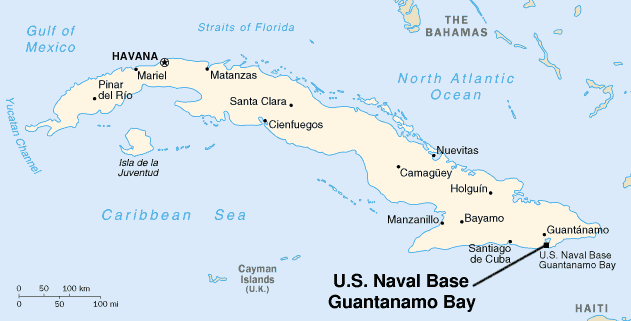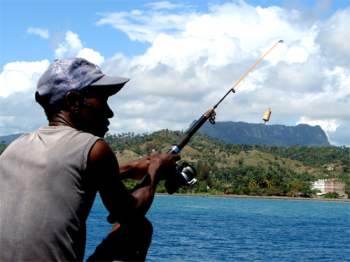Summer in Guantanamo, Cuba
Rosa Martinez

HAVANA TIMES, August 3 — When people from other countries hear the word “Guantanamo,” the first thing that comes to their minds is the existence of a prison that infringes on basic human liberties and the area’s occupation by a United States military base.
And actually they’re not too far off. Located here is one of the many hundreds of military bases that the United States has staked out all over the world; and like in many other nations, it’s here against the will of the people.
The existence of this military installation goes back to 1903, the moment when control over this piece of Cuban territory was officially wrested. The use of the facility was originally identified as a coal fueling station, though in fact it has never been used for that. It’s more recent use has been as a concentration camp where prisoners remain without trial and the most elementary rights of human beings are violated.

But Guantanamo is not only this “Yankee” base. It’s also the most eastern province of Cuba as well as the fifth most populated city on the island.
I might add that thanks to the base, Guantanamo residents cannot completely enjoy Guantanamo Bay, the third largest pocket bay in the world. Otherwise it could have been key to the country’s trade and consequently the development of the province. Instead, we are banned from access to an area with practically virgin vegetation and a high quality beach.
I’m not going to stop there, it would be better that I tell readers about Mother Nature blessing our land, especially in the summer, for which we locals are thankful.
Our province was named “Guantanamo” (city between rivers) not only because of the largest river in Cuba — El Toa, whose waters we swim in — but also because of the hundreds of streams that flow through our area, from east to west and north to south.
It is precisely these rivers and pools that offer the main recreational option for our people in summer. Although vacationers can go to the beach, the cinema, to children’s parks, the theater, the “Stone Zoo” (the only one in our country), as well as visit other cities on the Island, rivers are the principal attraction in any corner of the province – from Niceto Perez municipality (the closest to neighboring Santiago de Cuba Province) to the Punto de Maisi (the eastern-most point of the island).

One could say that we prefer to go to rivers because it’s one of the options that cost least, but the main reason is that stifling heat leaves few better alternatives than cooling off in the closest pool of fresh water.
As the more than 600 streams, tributaries and rivers that course through our province provide excellent conditions for swimming, there’s nothing better than going with family members or friends from work or the neighborhood to enjoy what the nature affords us.
Some people go with their small children to enjoy a few hours; others stay the whole day and prepare flavorful caldrons of soup with all the ingredients that we’re used to adding to our Creole stew – from a pig’s head to kernels of tender sweet corn. Those people who can afford it will bring a whole pig that they roast or prepare in a mouth-watering fricassee; these people are in the minority of course.
What’s important in all cases is to try to spend it well among friends, refreshing and relaxing with nature, and if you can enjoy it without spending too much, then so much the better.





